Operator(s) JR East Line length 73.3 km (45.5 mi) | Stations 19 Opened 1889 Track gauge 1,067 mm (3 ft 6 in) | |
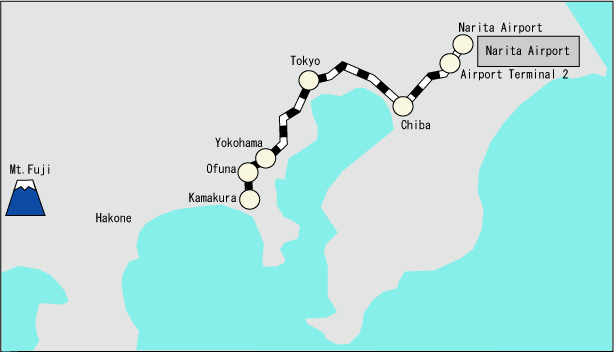 | ||
Electrification 1,500 V DC overhead catenary | ||
Taking the green car sobu yokosuka line rapid train
The Yokosuka Line (横須賀線, Yokosuka-sen) is a railway line in Japan operated by the East Japan Railway Company (JR East).
Contents
- Taking the green car sobu yokosuka line rapid train
- Tokyo japan yokosuka line train at shinagawa station hd 2015
- Official definition
- Route as operated by JR East
- Route
- Services
- Station list
- History
- Chronology
- Hinkaku Line
- References
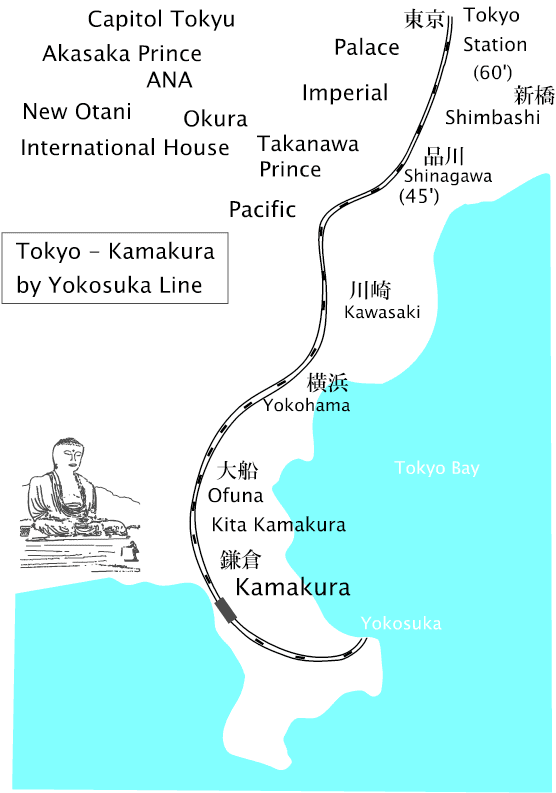
The Yokosuka Line connects Tokyo Station with Kurihama in Yokosuka, Kanagawa. Officially, the name Yokosuka Line is assigned to the 23.9 km segment between Ōfuna and Kurihama stations, but the entire route is commonly referred to as the Yokosuka Line by JR East for passenger service.
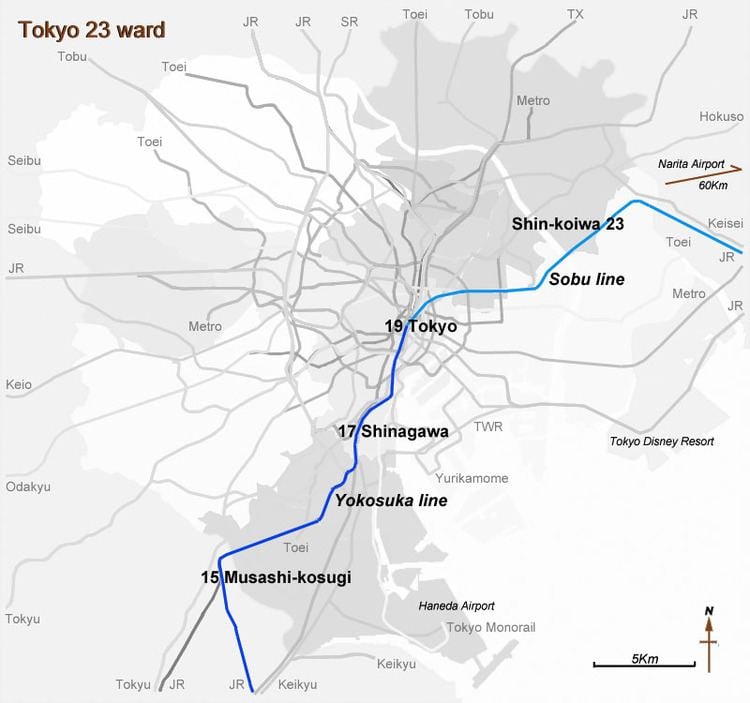
Tokyo japan yokosuka line train at shinagawa station hd 2015
Official definition
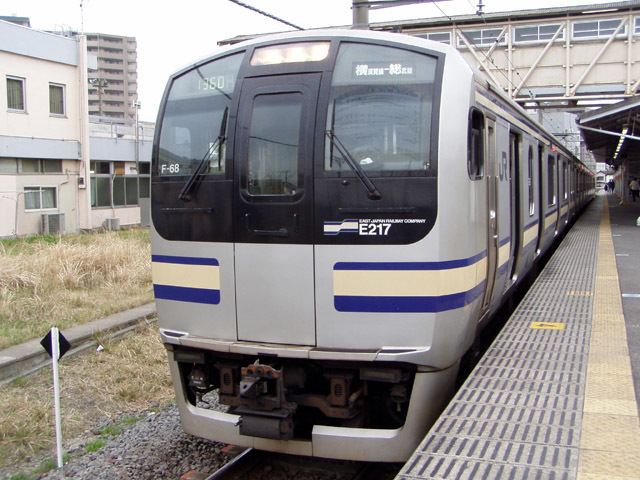
Route as operated by JR East
Route
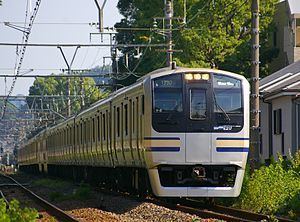
The Yokosuka Line runs underground between Tokyo and Shinagawa (parallel to the Tōkaidō Main Line, the Yamanote Line and the Keihin-Tōhoku Line) then branches to the west along the Tōkaidō Shinkansen into the city of Kawasaki. (This alignment, technically known as the Hinkaku Line (品鶴線, Hinkaku-sen), was originally built for freight usage; see below.) It rejoins the Tōkaidō Main Line corridor near Tsurumi Station and follows the Tōkaidō Main Line to Ōfuna, where it branches off to the southeast along the original Yokosuka Line toward the Miura Peninsula.
Services
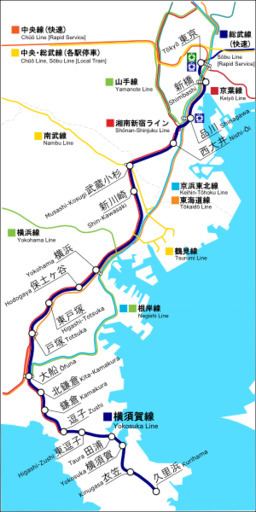
Yokosuka Line local trains make all stops. Most trains have 11 cars, with two of those being Green (first class) cars. Other trains between Tokyo and Zushi are made up of 15 cars—an 11-car set joined to a 4-car set. (Due to shorter platform length at stations south of Zushi, only 11-car trains are operated to Kurihama.) The Airport Narita rapid service operates as a local train within the Yokosuka Line.
Shōnan-Shinjuku Line local trains make all stops on the Yokosuka Line between Nishi-Ōi and Zushi.
For information on the Narita Express and other limited express services, see their respective articles.
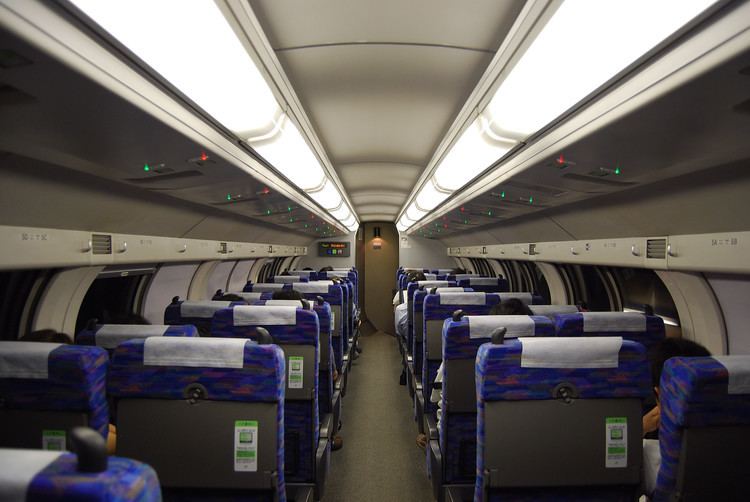
The Yokosuka Line has through service onto the Sōbu Line to Chiba and beyond. Some trains travel as far as:
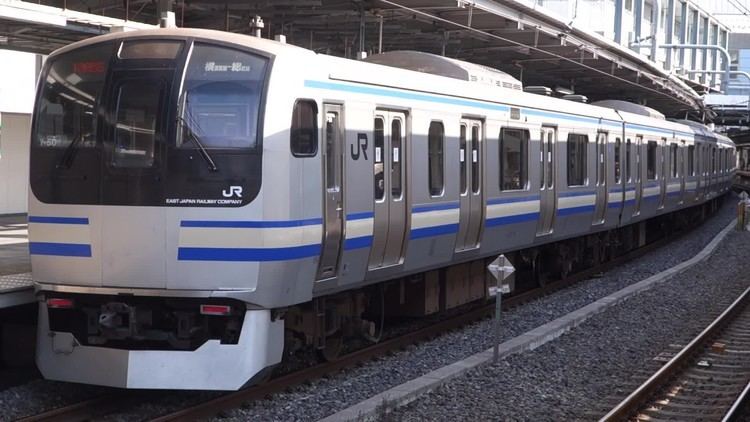
Station list
The section between Yokosuka and Kurihama is single-tracked; trains can only pass one another at Kinugasa and Kurihama stations.
History
The Yokosuka Line was constructed in response to the request to the Cabinet by the Navy and the Army, dated June 22, 1886, citing the lack of ground transportation to Yokosuka, one of the most important military bases in the country. On April 22, 1887 the Cabinet ordered the Government Railways to build the line with the budget diverted from the fund for the Tōkaidō Line construction. After the survey from July to December 1887, the construction of the railway between Ōfuna and Yokosuka started in January 1888 and completed in June 1889 spending 408,480 yen in total. The operation of the line started on June 16, 1889.
Chronology
Hinkaku Line
The Hinkaku Line (品鶴線, Hinkaku-sen) was originally built to divert freight traffic from the busy Tōkaidō Main Line, providing an alternate route between Tokyo and Tsurumi. After a 1967 explosion, freight trains were banned from portions of the central Tokyo rail network, providing the impetus for the construction of the orbital Musashino Line. The new Musashino Line was connected to the Hinkaku Line roughly 6 km north of Tsurumi Station near Musashi-Kosugi, siphoning off nearly all freight traffic after its opening in 1975. This left a substantial chunk of the double-tracked, mostly grade-separated Hinkaku Line disused.
In order to put the line back into passenger service, a new 6 km track was installed between Tsurumi Station and the Musashino Line, where it was connected to the now-disused portion of the Hinkaku Line. Two new stations were constructed: one (Shin-Kawasaki) adjacent to the existing Kashimada Station on the Nambu Line in 1980 and another at Nishi-Ōi in 1986. Musashi-Kosugi Station, the third station in this section opened in 2010 and provides a transfer to the Nambu Line as well as the Tōkyū Tōyoko and Meguro lines.
